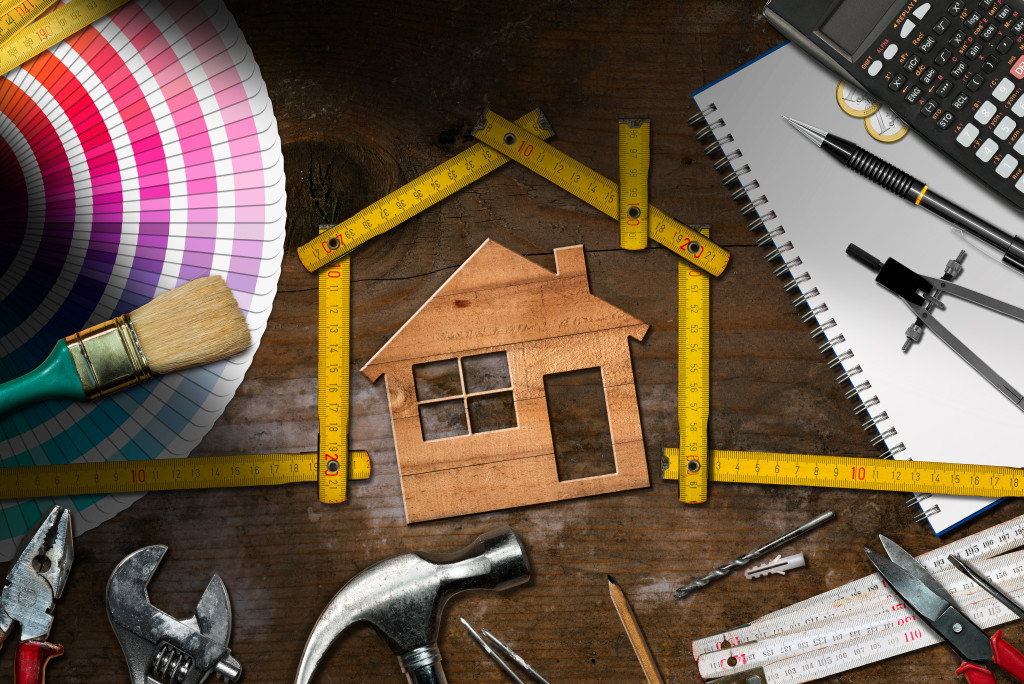How to Fund Your Next Home Improvement Project

Big home improvement projects often require tens of thousands of dollars to accomplish, but unless you are a millionaire, you might not have that kind of money for immediate use. You can always wait until you save enough cash to pay for the renovation bill, but this can take months or even years, considering all the other things that you have to pay for.
Whether you’re building a carport or adding an extension to your house, the cost of home renovation can be way above what you can pay out-of-pocket. Luckily, there are more than a few options to fund your project. If you are generally in a good financial position and can handle the additional costs of financing, go ahead and choose from the following options.
Liquid assets
Cash is the easiest and fastest way to pay for a renovation project. But if this is not an option, the next step is to take a look at your other liquid assets. Examples include savings bonds near maturity, mutual funds, stocks, bonds, exchange-traded funds (ETFs), and accounts receivable.
Take note that using your liquid assets to fund a project will take a good chunk out of your reserves. Choose this option only if you will remain financially stable after using your liquid assets and any extra cash that you can spare. If you have to dip into your emergency fund for this, you are likely better of choosing another mode of funding.
Home equity lines of credit (HELOC)
HELOCs are secured loans that use your home as collateral, which can help you get lower interest rates compared to home improvement loans. It is also a revolving line of credit that allows you to take the exact amount that you need and leave the rest for later or use it for some other purpose.
To qualify for a HELOC, you must have adequate home equity. There is also a risk of having your home foreclosed if you fail to pay the loan on time, so consider your finances carefully before choosing this route. Moreover, HELOCs can have varying interest rates depending on the market conditions, which means that your payments can increase at any point of the loan life.
Home improvement loans

This type of loan is offered by banks, credit unions, and private lenders. These are unsecured loans, meaning that you don’t have to use your home as collateral to qualify and you can get cash relatively quickly. The lender will use your credit score as the basis for your qualification and interest rate, which is good news if you have a good credit score.
The downside to this type of loan is that it usually has higher interest rates than home equity loans or HELOCs. Some lenders also charge fees for application, late payments, and prepayments. In spite of that, you won’t have to put your home down as collateral and you can get all of the cash upfront.
A home improvement loan is a great option for mid-sized renovation projects, especially if you know exactly how much they will cost. It is also possibly the best type of funding for homeowners who don’t have sufficient home equity.
Zero-interest home remodeling loans
Check with your locality if they have Home Improvement Programs that subsidize a part or all of the interest on your project. If you qualify, you can get a substantial loan of around $25,000 to $50,000 (the typical maximum amount for loans) without having to pay for interest. It’s basically free money and a great way to reduce your home renovation expenses.
Refinancing
Refinancing your mortgage gives you a new interest rate, allowing you to get the difference between the old loan and the new one and use it for home renovation.
Shop around for a new mortgage that is significantly higher than the outstanding balance on your current loan and will allow you to cash out the difference. Not only does refinancing help fund a large home renovation project, but it can also get you a lower interest on your mortgage. However, keep in mind that you will have to pay more in interest since you’re getting a bigger loan amount.
If you have substantial home equity, cash-out refinancing is one of the best options to consider for home renovation and other large expenses.
Not all of these options will work for everybody, so make sure you choose the one that works best for your financial situation, the size of your project, and the equity that you have in your home. However, if financing your home renovation project will likely put you in a precarious financial situation, it’s safest to wait until you build a better credit score, gain more equity, or have more money in your savings, whatever you need to protect your finances.




